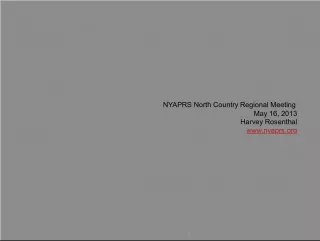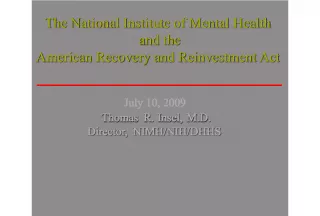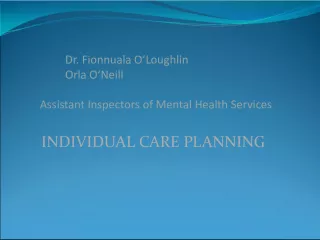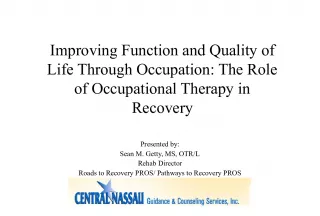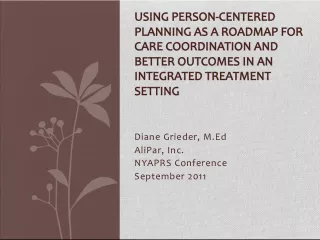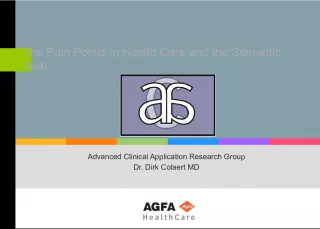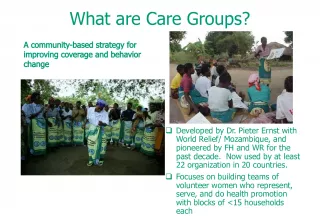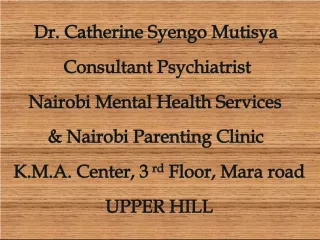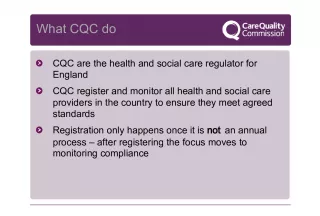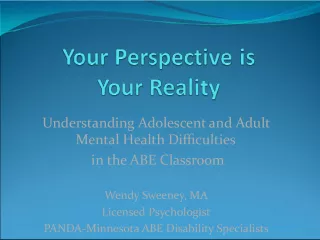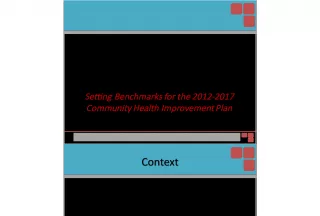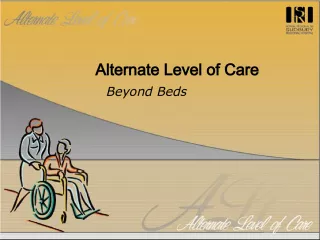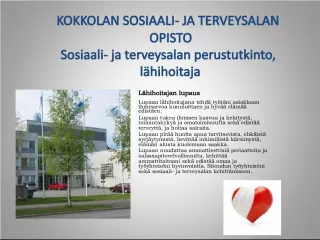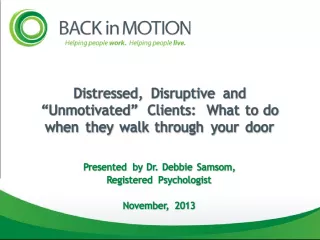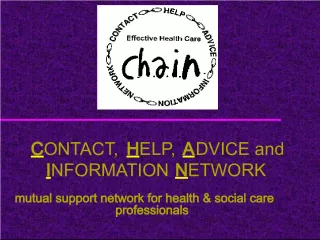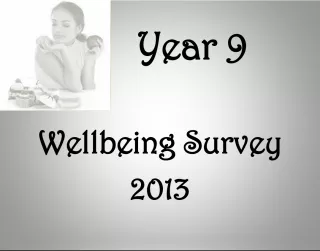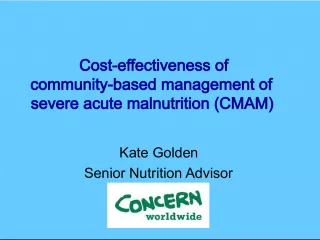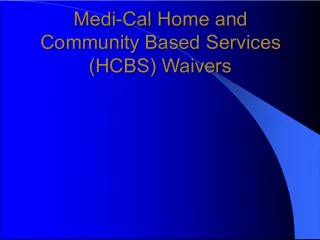Transformations in Mental Health Care: From Asylums to Community-based Recovery
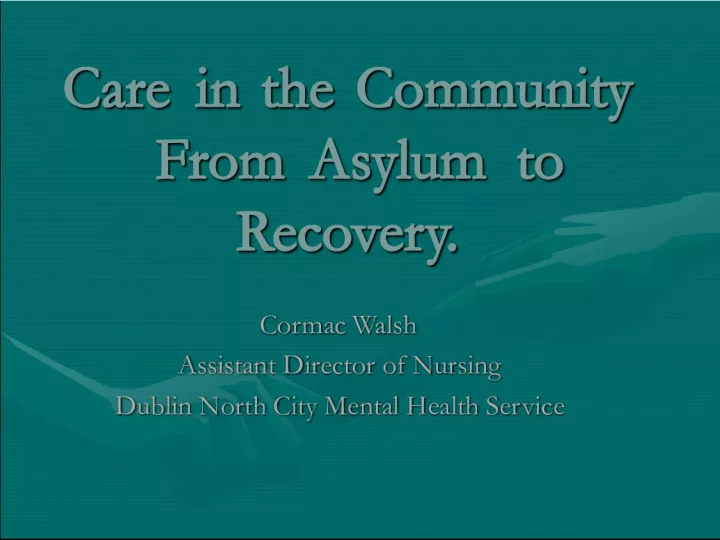

This presentation by Assistant Director of Nursing, Cormac Walsh, explores the evolution of mental health policies and practices in Ireland through the lens of the Care in the Community model. Key themes include recent legislation, supported residential services, and the Programme for the Homeless Mentally Ill, as well as future prospects for mental health care in Ireland.
- Uploaded on | 1 Views
-
 gavin
gavin
About Transformations in Mental Health Care: From Asylums to Community-based Recovery
PowerPoint presentation about 'Transformations in Mental Health Care: From Asylums to Community-based Recovery'. This presentation describes the topic on This presentation by Assistant Director of Nursing, Cormac Walsh, explores the evolution of mental health policies and practices in Ireland through the lens of the Care in the Community model. Key themes include recent legislation, supported residential services, and the Programme for the Homeless Mentally Ill, as well as future prospects for mental health care in Ireland.. The key topics included in this slideshow are mental health, care in the community, policy, legislation, residential services, homelessness, recovery,. Download this presentation absolutely free.
Presentation Transcript
1. Care in the Community From Asylum to Recovery. Care in the Community From Asylum to Recovery. Cormac Walsh Cormac Walsh Assistant Director of Nursing Assistant Director of Nursing Dublin North City Mental Health Service Dublin North City Mental Health Service
2. Themes Themes Mental Health Legislation and Policy in Ireland Mental Health Legislation and Policy in Ireland Supported Community Residential Services Supported Community Residential Services The Programme for the Homeless Mentally Ill The Programme for the Homeless Mentally Ill The Future The Future
3. 1850 Lunatic Asylum Act (Ireland) 1850 Lunatic Asylum Act (Ireland) York Retreat. York Retreat.
4. Richmond Lunatic Asylum St Brendans Hospital 1814-2013. Richmond Lunatic Asylum St Brendans Hospital 1814-2013.
5. 1945 Mental Treatment Act 1945 Mental Treatment Act; allowed for the voluntary admission of people in Psychiatric Hospitals, made the first step towards Community care allowing patients to be paroled..
6. St Brendans Hospital 1966 St Brendans Hospital 1966 Top House Top House
7. 1966 Commission of Inquiry on Mental Illness 1966 Commission of Inquiry on Mental Illness Goffmanns characteristics of total institution - asylum Goffmanns characteristics of total institution - asylum (1) all aspects of life are conducted in the same place under the same authority; (1) all aspects of life are conducted in the same place under the same authority; (2) the individual is a member of a large cohort, all treated alike; (2) the individual is a member of a large cohort, all treated alike; (3) all daily activities (over a 24-hour period) are tightly scheduled; (3) all daily activities (over a 24-hour period) are tightly scheduled; (4) there is a sharp split between supervisors and lower participants; (4) there is a sharp split between supervisors and lower participants; (5) information about the member's fate is withheld. (5) information about the member's fate is withheld.
8. Planning for the Future 1984 Planning for the Future 1984 Planning for the Future (DoH, 1984) provided the strategic framework that enabled the adult mental health services to evolve from an institutional to a community-based service model and approach. Planning for the Future (DoH, 1984) provided the strategic framework that enabled the adult mental health services to evolve from an institutional to a community-based service model and approach. It directed that the psychiatric services should be comprehensive and community-orientated, and aimed at delivering care that was coordinated, integrated, and multidisciplinary (DoH, 1984). It directed that the psychiatric services should be comprehensive and community-orientated, and aimed at delivering care that was coordinated, integrated, and multidisciplinary (DoH, 1984). Countrywide, mental hospital services embarked on programmes of ward closure that resulted in a decrease in the number of in- patients in mental hospitals from a total of 19,801 in 1963 to 3,556 at the end of 2004. A significant rise in community-based facilities paralleled this decline in bed usage, giving rise to over 3,100 community residential places under the care of the mental health services in 2004 (ORegan and Keogh, 2005). Countrywide, mental hospital services embarked on programmes of ward closure that resulted in a decrease in the number of in- patients in mental hospitals from a total of 19,801 in 1963 to 3,556 at the end of 2004. A significant rise in community-based facilities paralleled this decline in bed usage, giving rise to over 3,100 community residential places under the care of the mental health services in 2004 (ORegan and Keogh, 2005).
9. Psychiatric in-patient beds in Ireland 1896 to 2013
10. St Brendans Hospital Rehabilitation and Resettlement Programme St Brendans Hospital Rehabilitation and Resettlement Programme In SBH a formal rehabilitation and resettlement programme was established in 1986. The primary aim of the programme was to decant the mental hospital of long-stay in-patients to more appropriate community residential environments in order to facilitate the closure of the hospital. In SBH a formal rehabilitation and resettlement programme was established in 1986. The primary aim of the programme was to decant the mental hospital of long-stay in-patients to more appropriate community residential environments in order to facilitate the closure of the hospital. In conjunction with this programme, comprehensive and integrated community psychiatric services were planned to provide alternative treatment options to people at home. In conjunction with this programme, comprehensive and integrated community psychiatric services were planned to provide alternative treatment options to people at home. The Programme for the Homeless, NFA Unit The Programme for the Homeless, NFA Unit Sector CMHT, Cabra, Finglas and Blanchardstown. Sector CMHT, Cabra, Finglas and Blanchardstown. Over a nine-year period the number of in-patients residing in the hospital steadily fell each year from a high of 1200 inpatients in 1986 to 257 in 1994. Over a nine-year period the number of in-patients residing in the hospital steadily fell each year from a high of 1200 inpatients in 1986 to 257 in 1994.
11. Community Residences Community Residences The provision of residential facilities largely depends on two key variables: The provision of residential facilities largely depends on two key variables: (1) the extent of informal family support, which can substitute and replace the formal support granted by residential facilities; (1) the extent of informal family support, which can substitute and replace the formal support granted by residential facilities; and and (2) the availability of comprehensive community resources, including assertive community treatment programmes (Girolamo et al., 2004; Thornicroft, 2003). (2) the availability of comprehensive community resources, including assertive community treatment programmes (Girolamo et al., 2004; Thornicroft, 2003).
12. Continuum Model Continuum Model The Continuum model posits that there are different residential settings, such as group homes and hostels, with various levels of support and restrictiveness; the most intensive treatment is offered in the most restrictive environment. The Continuum model posits that there are different residential settings, such as group homes and hostels, with various levels of support and restrictiveness; the most intensive treatment is offered in the most restrictive environment. Residents can move along the continuum, from more restrictive to more open settings, the level of supervision is based on the level of assessed need and level of functioning, thus providing a pathway from institutional care into independent living in the community (Girolamo et al., 2004). Residents can move along the continuum, from more restrictive to more open settings, the level of supervision is based on the level of assessed need and level of functioning, thus providing a pathway from institutional care into independent living in the community (Girolamo et al., 2004). The continuum model has been criticized because it bonds housing and treatment needs, and this may lead to unnecessary dislocations through successive moves as improvement in functioning often requires a move to another setting (Carling 1993). The continuum model has been criticized because it bonds housing and treatment needs, and this may lead to unnecessary dislocations through successive moves as improvement in functioning often requires a move to another setting (Carling 1993). Furthermore, housing is frequently not available at precisely the time when the persons needs change and skills acquired for independent living in an artificial environment, such as residential facility, may not be transferred and used in another setting (Girolamo et al., 2004). Furthermore, housing is frequently not available at precisely the time when the persons needs change and skills acquired for independent living in an artificial environment, such as residential facility, may not be transferred and used in another setting (Girolamo et al., 2004).
13. High Supported Community Residences 2005 High Supported Community Residences 2005
14. Diagnoses Diagnoses Schizophrenia: 74.9% Schizophrenia: 74.9% Schizoaffective disorder: 5.5% Schizoaffective disorder: 5.5% Bipolar Affective Disorder: 12.3% Bipolar Affective Disorder: 12.3% Depression: 2.3% Depression: 2.3% Alcohol Dependence: 0.8% Alcohol Dependence: 0.8% Other: 1.5% Other: 1.5% No Mental Health Diagnosis: 2.3% No Mental Health Diagnosis: 2.3% Unknown: 0.8% Unknown: 0.8%
15. Mental Health Act 2001 Involuntary Admission of persons to approved centre Independent Review of Detention Established the Mental Health Commission to promote, encourage and foster the establishment and maintenance of high standards and good practices in the delivery of mental health services . Inspector of Mental Health Services
16. Vision for Change 2006 Vision for Change 2006 Vision of Change details a comprehensive model of mental health service provision in Ireland. It proposes a holistic view of mental illness and recommends an integrated multidisciplinary approach to addressing the biological, psychological and social factors that contribute to mental health problems. Vision of Change details a comprehensive model of mental health service provision in Ireland. It proposes a holistic view of mental illness and recommends an integrated multidisciplinary approach to addressing the biological, psychological and social factors that contribute to mental health problems. Principles and values underpinning the Vision include Multidisciplinary; community based; comprehensive; active participation and recovery; Principles and values underpinning the Vision include Multidisciplinary; community based; comprehensive; active participation and recovery;
17. Recovery Recovery The Recovery approach is a shared philosophy which draws upon evidence concerning the importance of values social roles, such as employment while also emphasizing user determination and positive risk- taking. The Recovery approach is a shared philosophy which draws upon evidence concerning the importance of values social roles, such as employment while also emphasizing user determination and positive risk- taking. Personal Responsibility Personal Responsibility Hope Hope Rebuilding programme Rebuilding programme Contentment Contentment Roles and relationships. Roles and relationships. Leighton (2005) Leighton (2005)
18. High Support Community Residences 2011 High Support Community Residences 2011
19. Church Ave 2011 Structure: Small 8 ensuite / bedrooms residence System: Self staffing / Nursing MDT input / OT Skill mix/sleepover Self catering
20. Turnover 30 individuals admitted in three years 12 moved back Home 118 episodes of respite 2 Individuals at risk of homelessness substance misuse / anti-social behaviour / non-payment of charges 14 have moved to lower supported accommodation provided by HSE. 7 have progressed to independent living
21. Doras 2011 -2013 Doras 2011 -2013 Genio funded: Genio funded: Collaboration between HSE Dublin North City Mental Health Services and HAIL Collaboration between HSE Dublin North City Mental Health Services and HAIL Aim: Aim: To build a sustainable model of Community Mental Health Rehabilitation that will deliver a range of recovery focused supports To build a sustainable model of Community Mental Health Rehabilitation that will deliver a range of recovery focused supports
22. The challenge The challenge Housing Housing Source high quality secure housing Source high quality secure housing Maintain and support tenancy Maintain and support tenancy Independent living as a realistic goal Independent living as a realistic goal Connections Project Connections Project Social Roles Valorization Social Roles Valorization Meaningful roles Meaningful roles
23. 2016 Target High Supported Community Residential Places. 2016 Target High Supported Community Residential Places.
24. Supported Community Residential Strategy 2014-2019 Supported Community Residential Strategy 2014-2019 Reduce the number of residents to between 8- 10; individual rooms Reduce the number of residents to between 8- 10; individual rooms Locate community residences across the catchment area; Cabra, Finglas and Blanchardstown. Locate community residences across the catchment area; Cabra, Finglas and Blanchardstown.
25. Homelessness Homelessness Factors contributing to increased homelessness Factors contributing to increased homelessness Lack of affordable housing Lack of affordable housing Reduced entitlements Reduced entitlements Growing numbers in poverty Growing numbers in poverty Individual vulnerabilities Individual vulnerabilities Mental Illness Mental Illness Substance Misuse. Substance Misuse.
26. Comparison between Homeless and Homeless Mentally Ill Comparison between Homeless and Homeless Mentally Ill Both groups share backgrounds marked by: Both groups share backgrounds marked by: Poverty Poverty Dependency on welfare Dependency on welfare Childhood hunger Childhood hunger Family unemployment . Family unemployment . Homeless Mentally Ill had a higher instance Homeless Mentally Ill had a higher instance Family violence and abuse Family violence and abuse Foster care Foster care Childhood homelessness Childhood homelessness
27. Programme for the Homeless Programme for the Homeless Established in 1979 comprised Established in 1979 comprised The Willows The Willows NFA Day Centre moved off campus to Ushers Island in 1997 NFA Day Centre moved off campus to Ushers Island in 1997 Three supported Community Residences Three supported Community Residences 24 hr self referral assessment unit, SBH 24 hr self referral assessment unit, SBH Acute In-patient beds Acute In-patient beds
28. Changes to the programme Changes to the programme 2009-2014 2009-2014 Closure of Community Residences Closure of Community Residences Closure of in-patient unit Closure of in-patient unit Closure of self-referral assessment unit Closure of self-referral assessment unit Assertive Outreach Assertive Outreach Acess Team Acess Team Outpatient Clinic 2011 Park Gate Street. Outpatient Clinic 2011 Park Gate Street. Day Hospital 2012 Day Hospital 2012 Reconfiguration 2014. Reconfiguration 2014.
30. Mission Mission The Programme for the Homeless Mental Health Service provides specialist community mental health care and treatment for registered homeless adults with severe mental illness living within Dublin City Centre. The Programme for the Homeless Mental Health Service provides specialist community mental health care and treatment for registered homeless adults with severe mental illness living within Dublin City Centre.
31. Optimism for the future Optimism for the future Primary Care Strategy; Primary Care Strategy; strengthening links with MHS strengthening links with MHS National Clinical Care Programmes National Clinical Care Programmes For episode psychosis For episode psychosis Family education Family education Behavioural Family Therapy Behavioural Family Therapy Eolas Programme Eolas Programme Recruitment of full compliment of MDT members. Recruitment of full compliment of MDT members. National Housing Strategy for People with Disabilities 2011- 2016. National Housing Strategy for People with Disabilities 2011- 2016.
32. DIT Campus, DIT Campus,
33. Students first day Students first day
34. Thank you Thank you
